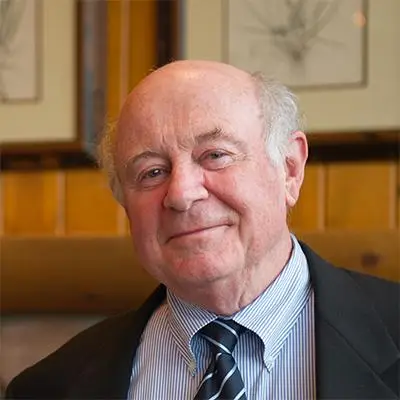New York City Mayor Bill DeBlasio has announced his big inequality-reducing school improvement initiative, a commitment to community schools. Citing Cincinnati’s community schools as their inspiration, DeBlasio and Schools Chancellor Carmen Fariña pledge to start 40 new “wrap-around services” schools and add nearly 300 organizations to the list of approved after-school service providers.
DeBlasio is being consistent: he has decided to pause on the opening and closing of schools to improve student outcomes in favor of trying to mitigate the effects of poverty on students and schools. Community schools try to compensate for poverty by wrapping health, dental, therapeutic, and family support services around existing schools.
We can’t fault him for trying the idea. A CRPE team that visited Cincinnati last fall saw some impressive things at Oyler School, the one city school that has the full complement of support services. The people who arrange, provide, and fund these services at Oyler School (including local hospitals, mental health and vision clinics, and big businesses) are making huge investments to provide the help kids and families need.
But NYC should heed the Cincinnati experience: even when kids are healthier, schools that don’t challenge them and don’t push teachers don’t get better results. This is consistent with the results of the Harlem Children’s Zone in NYC, where careful studies have shown students’ learning growth is due to improvement of the schools as educational institutions. The wrap-around services in Cincinnati (and soon in NYC) need to be part of a broader school improvement strategy. This is so for five reasons:
- The links between even intensive services and student learning are weak and hard to find. In Cincinnati, the strongest link between student services and outcomes like normal progress in school comes from attendance gains: for example, mothers don’t need to take all their kids out of school when they might have to wait all day to be seen at an emergency room. Cincinnati lacks a strong accountability system, for schools and for wrap-around services, and doesn’t really try to measure the effects of particular interventions. Many initiatives (e.g., the eye and dental clinics at Oyler School) are inspiring, but nobody can say how much these expensive interventions raise student achievement, or what needs are going unmet.
- Cincinnati district leaders have ridden the enthusiasm about community learning centers and have ducked hard questions about improving instruction. As the third grade reading scores that have just come out for Ohio districts show, Cincinnati hasn’t moved the needle. (Cincinnati comes out ahead of poorer Ohio cities like Cleveland and Dayton, in part due to a long-standing if partial commitment to what we would call portfolio management—school differentiation and some freedom of action; some family choice). The next superintendent and school board will be blessed to have the community learning centers, but they will need to return to the question they recently set aside: how are we going to make the schools more effective?
- An emphasis on social and health services can make teachers and principals think that instructional practices and the conditions of teaching don’t need to change. The special services we saw didn’t touch the core of the school, and they can give people cover to avoid the hard work of managing schools, evaluating instructional staff, seeking and strategically allocating teaching talent, and looking for more effective options. Moreover, the community learning centers don’t necessarily free up teachers and principals to focus on instruction. Though special resource coordinators oversee most of the services, teachers and principals need to adapt to student absences for visits to service providers and work to make the programs connect to classroom instruction.
- Community learning centers are expensive, and require massive additions to school facilities. In Cincinnati, the centers were part of the district’s 10-year, $1 billion Facilities Master Plan. This included service design and extensive facilities enlargement and redevelopment, all of which could be done thoughtfully in an environment with new money available and low real estate costs. But these up-front costs are not the whole story, as future charges for maintenance, utilities, upgrades, and repairs will hit the school district budget. These costs haven’t been weighed against alternative investments like longer school years, more intense instructional enrichment, etc.
- It is easy to get comprehensive services for one or a few exemplar schools, but the best of these (health, dental, one-on-one therapy) are extremely expensive. Despite an enormous response from Cincinnati hospitals and businesses, the full set of services is present only at Oyler, the school that visitors like us and Greg Anrig are shown around, while many schools have much less. This doesn’t mean that the community doesn’t care, only that donated resources are finite. In NYC, it might be possible to get rich sets of services into 40 schools. But is it realistic to think the same can be done for the thousand or so local schools with high numbers of disadvantaged students?
While leaders in NYC believe they have a lot to learn from Cincinnati, in fact, Cincinnati has something to learn from the NYC reforms in the Bloomberg era: there is no substitute for pressing hard for instructional improvement, giving principals freedom to lead their schools, rewarding the best teachers, and constantly searching for more effective instructional models.
City and district leaders should welcome community institutions that will improve children’s access to health and social services. Cincinnati has shown how much can become available and how good it can be. A city’s portfolio should certainly include services enrichment, targeted on schools where the needs are greatest and donations are forthcoming. But a community schools initiative is not enough to compensate for instructionally weak or divided schools. It doesn’t eliminate the need to search for better instructional models, encourage strong new school leaders and providers, and give families real educational options.




